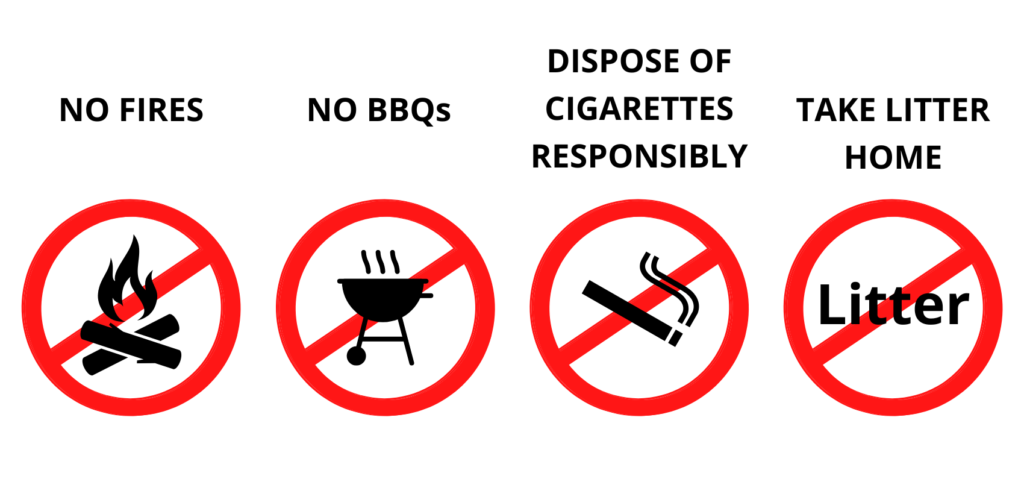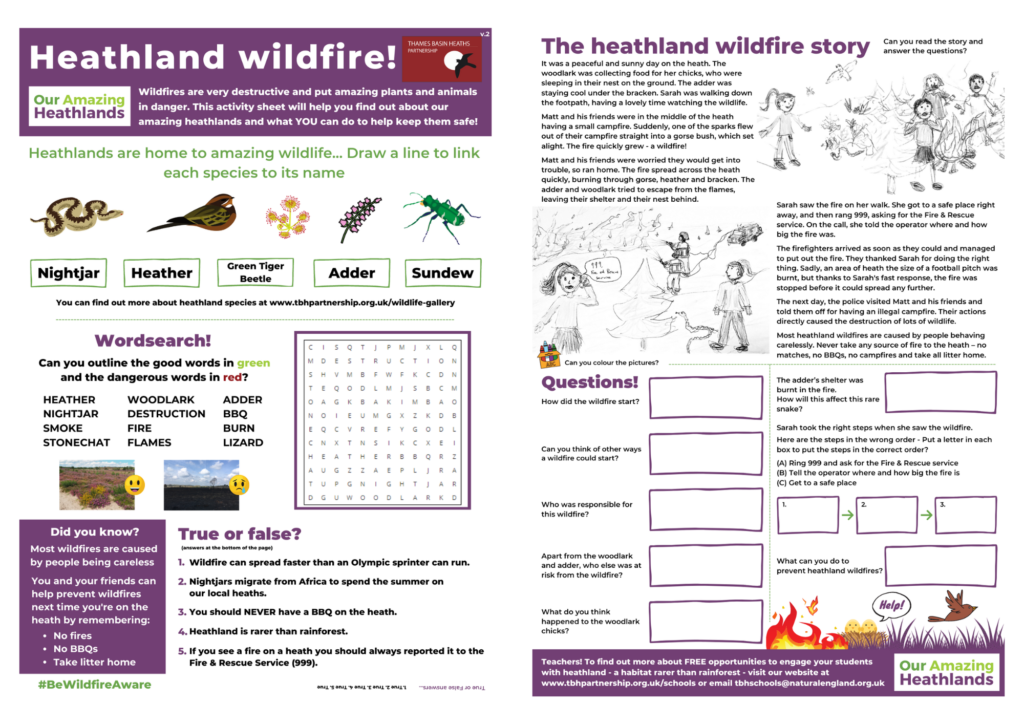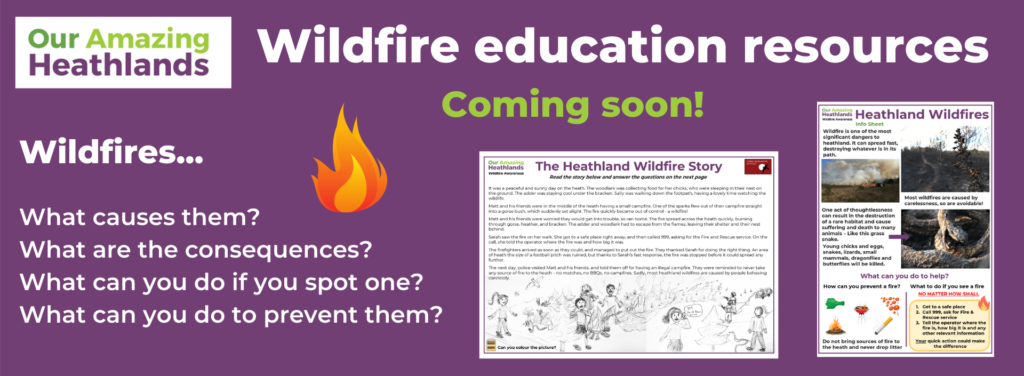Be wildfire aware
Is wildfire such an issue?
Yes! Wildfire is one of the most significant dangers to heathland. It can spread fast, destroying whatever is in its path.
Amongst that destruction will be young chicks and eggs, snakes, lizards, small mammals, dragonflies and butterflies. Vegetation burns quickly, with vast areas consumed in all directions.
The lives of visitors are at risk and people’s houses on the fringes are placed in jeopardy and firefighters head towards danger to fight the advancing flames.
Fires can burn for days, sometimes burning underground and reappearing elsewhere.
This destruction can take years to recover from and can set rare species back sometimes to the point of no return. It can alter habitats – with intricate mixes of heathers, mosses and other small plants being replaced by blankets of bracken or seas of grass.
Download: Heathland & Wildfire Newsletter
What starts a wildfire?
2020 saw a number of incidents of significant wildfires on the Thames Basin Heaths. Horsell Common, Barossa, Bramshill, Brentmoor Heath, Turf Hill, Yateley Common, Hazeley Heath, Ash Ranges all had destructive fires. There was a particularly large wildfire at Chobham Common that crossed a road and railway and saw local people evacuated from their houses. Further afield, there were large wildfires at Thursley National Nature Reserve in Surrey, and one at Wareham in Dorset that destroyed an area of heathland about 200 football pitches in size.
Most wildfires are caused by carelessness, so are ultimately avoidable.
It is often difficult to pin-point the exact cause of a wildfire, but most are started through a simple act of carelessness: A discarded cigarette, a disposable BBQ, the sun being magnified through a glass bottle tossed into the vegetation or people messing around with fire.
One act of thoughtlessness can result in the destruction of a rare habitat and cause suffering and death to many animals. The message is straightforward – DO NOT bring sources of fire to a heathland.


How can we reduce the incidence of wildfires?
Quite simply, if everyone is careful and does not bring BBQs to the heath, ensures they dispose of cigarettes responsibly and takes all litter home, the frequency of wildfires will drop considerably.
We are all responsible for our actions and the message is clear.
Let’s make the summer of 2022 wildfire free!
In this hot, dry weather, there’s an increased risk of #wildfires. 🔥
Leave your #barbecues at home, and don’t have fires in the countryside. pic.twitter.com/OuPzsfjJHe
— NaturalEngland (@NaturalEngland) June 24, 2020
What to do if you discover a wildfire?
Swift action is vital and all fires, no matter how small, should be reported to 999.
- Get to a safe place
- Note the location of the fire
- Call 999 and ask for the Fire & Rescue Service
- Give as much information as you can
- If requested, meet the Fire & Rescue Service at the entrance
It is important that your first step is to get to a safe place. Flames can spread faster than an Olympic sprinter and can swiftly change direction, cutting off your escape routes. Your safety is of paramount importance.
A small fire can become a large fire very quickly and will be harder to extinguish, causing more damage. #BeWildfireAware
Heathland wildfire activity sheet
Wildfire is a massive threat to our heathlands and the plants and animals that live there. Click on the image below to download the activity sheet to help your children find out more about it and how they can help to protect these special places for wildlife!
Free Education Sessions!
Teachers! Here at the Thames Basin Heaths Partnership, we look to engage local schools with their heathlands and encourage them to take action to look after them. We offer a range of exciting free outdoor learning opportunities for your students that cover a range of curriculum areas across KS1 and KS2. These include opportunities for students to explore local heathland, learn about some fascinating rare animals and plants and discover the threats to this amazing habitat. We also offer classroom-based sessions and assemblies. #OurAmazingHeathlands
For more information, please contact Michael Jones – Education and Engagement Officer – michael.jones3@naturalengland.org.uk
Further reading
Download: Heathland & Wildfire Newsletter
Publications
Natural England (2020) The causes and prevention of wildfire on heathlands and peatlands in England
Forestry Commission (2014) Building wildfire resilience into forest management planning
Fire And Rescue Services







